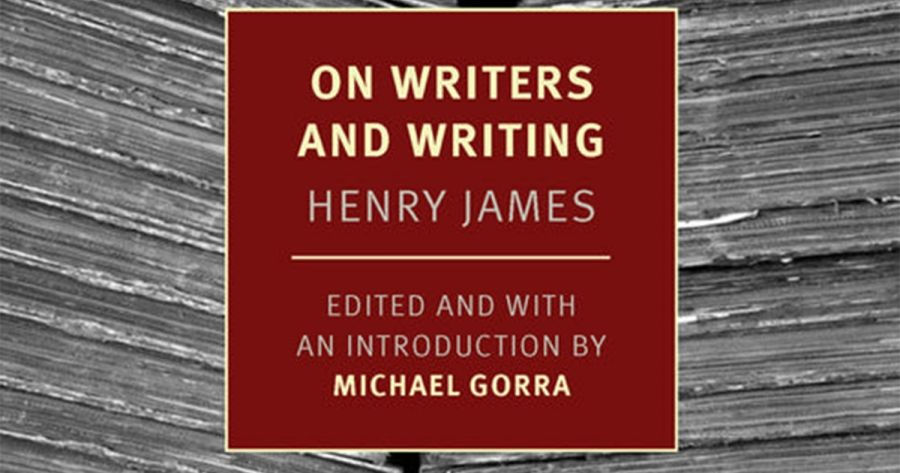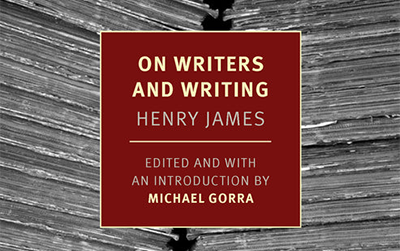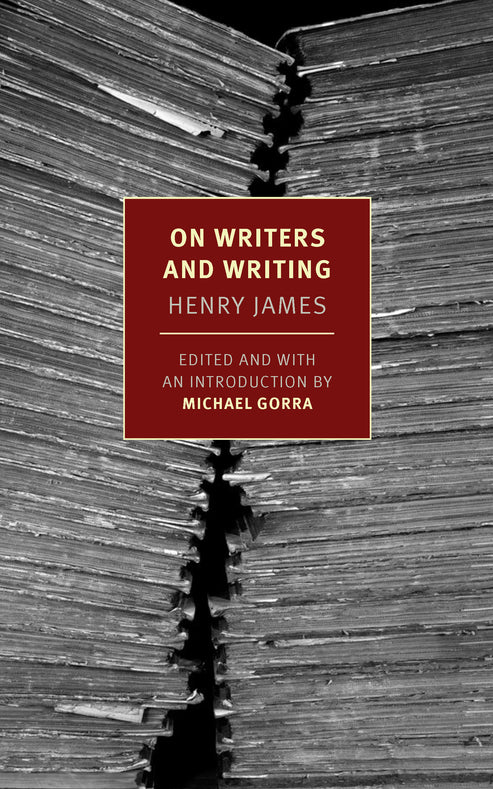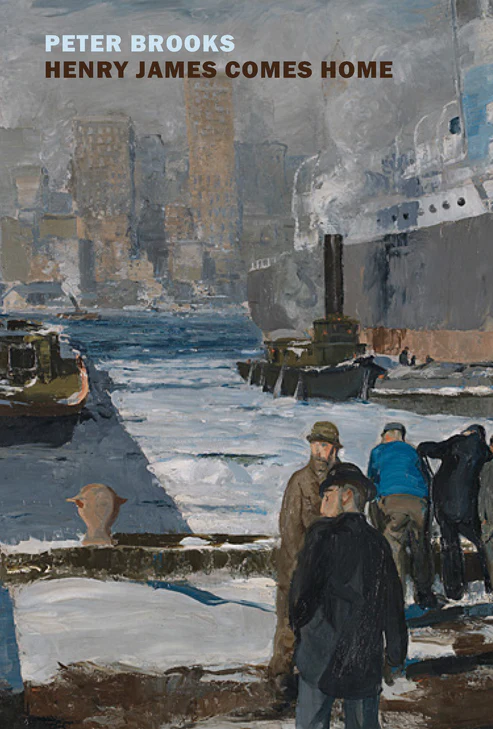
- Free Article: No
- Contents Category: Literary Studies
- Review Article: Yes
- Article Title: Henry James’s skyscrapers
- Article Subtitle: The Master in America
- Online Only: No
- Custom Highlight Text:
The New York Review Classics series has done much to keep canonical writers in print, having already published in smart paperback editions three lesser-known novels by Henry James: The Other House, The Outcry, and The Ivory Tower. These two new additions to the series, a selection of James’s essays ‘on writers and writing’, edited by eminent James scholar Michael Gorra, and a critical discussion of James’s The American Scene by Yale emeritus professor Peter Brooks, make further valuable contributions to the NYRB library.
- Featured Image (400px * 250px):

- Alt Tag (Featured Image): Paul Giles reviews ‘On Writers and Writing’ by Henry James and edited by Michael Gorra and ‘Henry James Comes Home: Rediscovering America in the Gilded Age’ by Peter Brooks
- Book 1 Title: On Writers and Writing
- Book 1 Biblio: New York Review Books, US$24.95 pb, 408 pp
- Book 1 Cover Small (400 x 600):

- Book 1 Cover (800 x 1200):

- Book 1 Readings Link: https://www.readings.com.au/product/9781681379234/on-writers-and-writing--henry-james-michael-gorra--2025--9781681379234#rac:jokjjzr6ly9m
- Book 2 Title: Henry James Comes Home
- Book 2 Subtitle: Rediscovering America in the Gilded Age
- Book 2 Biblio: New York Review Books, US$18.95 pb, 248 pp
- Book 2 Cover Small (400 x 600):

- Book 2 Cover (800 x 1200):

- Book 2 Readings Link: https://www.readings.com.au/product/9781681379210/henry-james-comes-home--peter-brooks--2025--9781681379210#rac:jokjjzr6ly9m
As Gorra notes in his introduction to On Writers and Writing, the biggest challenge for the editor of such a volume is what to exclude, given that ‘James was a working critic for the entirety of his professional life’. Gorra makes astute choices, including James’s famous 1884 essay ‘The Art of Fiction’, which he describes as ‘the most important English-language essay ever written about the novel’. He also includes a sample of James’s reviews of new Victorian novels, by Mary Elizabeth Braddon and others, along with tributes to authors who had recently died (George Eliot, Ivan Turgenev). Gorra finds room for essays on more technical aspects of fiction, including ‘The Future of the Novel’ (1899) and ‘The Lesson of Balzac’ (1905), as well as an interesting piece on Neapolitan writer Matilde Serao. The final essay is a late (1915) reminiscence about James T. Fields, publisher of Nathaniel Hawthorne and founder of The Atlantic Monthly.
Many of these essays will be familiar to scholars, but this is a judicious selection of James’s literary criticism for a broader audience. James is one of the few critics whom it is always a pleasure to read for the style and finesse of his writing, even when the substance of his argument might seem doubtful or even wrong-headed. Gorra confesses himself to be a great admirer of the way James conveys ‘a sense of the exhilarating complexity of form itself’, but even readers sceptical about James’s devotion to form as a sine qua non can hardly fail to be amused by his recollection of sharing a transatlantic voyage with Anthony Trollope, with James admiring his fellow author’s ‘magnificent example of plain persistence’ in producing his daily allotment of words, even amid the most challenging conditions: ‘The season was unpropitious, the vessel overcrowded, the voyage detestable; but Trollope shut himself up in his cabin every morning for a purpose which, on the part of a distinguished writer who was also an invulnerable sailor, could only be communion with the muse.’ James is perhaps condescending in his observation that Trollope ‘overworked’ and ‘abused his gift’, but his critical observations are pungent and also very funny.
Peter Brooks’s Henry James Comes Home, on the other hand, is a critical account of James’s return visit to the United States in 1904 and 1905 after an absence of twenty-two years, a trip that subsequently resulted in his book The American Scene (1907). Brooks is a distinguished scholar, author of Henry James Goes to Paris (2007), which chronicles how James’s experiences in France during 1875 and 1876 shaped the future directions of his writing. Brooks remarks here that he conceives this new book to be a ‘pendant’ to that earlier work.
Brooks is good on the biographical background of James’s visit to America, drawing on unpublished letters to chronicle how dentistry became an ‘obsessive topic’ for James during this trip and chronicling the author’s complicated relationships with his own family. His brother William James, the Harvard philosopher who resented the fact that his younger sibling had been elected to the American Academy of Arts and Letters before him, and with whom Henry enjoyed what Brooks calls a ‘passive-aggressive’ relationship, took off for a holiday in Greece shortly after Henry’s arrival in America. The University of Nebraska Press’s planned edition of James’s complete letters has so far only reached the year 1891, and Brooks’s diligent research, tracking down letters in university archives, is impressive and informative.
But there is at times an odd discrepancy between the flatness of Brooks’s descriptions and the imaginative exuberance of James’s own style in the plentiful passages quoted here from The American Scene. Brooks gives the impression of treating James as a Victorian novelist sadly adrift in the new world of twentieth-century America, remarking how he was ‘indisputably a snob wedded to his Anglo-American heritage’. Yet one of the strengths of The American Scene is its author’s willingness to confront a world he acknowledges he cannot fully comprehend and to grapple with changes in America since the time of his own youth. In 1918, shortly after James’s death, T.S. Eliot praised his fellow American exile’s ‘capacity for keeping his mind alive to the changes in the world during twenty-five years’. Brooks, by contrast, seems sometimes to present James’s return visit as a kind of Rip Van Winkle venture, describing him as ‘obtuse and reactionary’ in the way he found ‘no path to intimacy with the skyscraper’, since he was not able ‘to make it a humane object’.
This critical line is all the more peculiar since Brooks is, when he puts his mind to it, a fine reader, someone attuned to James’s quizzical representation of what The American Scene calls ‘the constituted blankness’ of this new world. The fact that James chose on this trip to spend more time in the South and the West, rather than in his more familiar settings of Boston and New York, exemplifies his ambition to extend the range of his travels, both geographical and imaginative. This was not primarily an expedition to revisit nineteenth-century haunts, but to explore new horizons. He writes about the ‘high, shining crystal walls’ of a Florida hotel as well as the landscape and climate of California and Oregon, describing the West Coast as ‘far and away the handsomest impression of all my experience of the American land’.
In this sense, Brooks’s invocation of Alexis de Tocqueville as a touchstone for James’s enquiry seems anomalous. James was not especially interested in offering a sociological report on what Brooks calls ‘American democracy in its civic and social consequences’, and especially not in its nineteenth-century forms. W.H. Auden, in a 1946 introduction to The American Scene, noted how buildings become strangely animated in James’s account of American urban life, while Stephen Spender also called James’s description of the New York skyscrapers ‘surrealistic’. Brooks seems at times to miss the irony, verging at times on self-parody, of James’s tone; when his narrator invokes ‘the proper spirit of St. George’, he is implicitly mocking older custodians of this ‘spirit’, including himself. Brooks is right to say The American Scene is ‘a bit imprecise’ and ‘not entirely coherent’, but it was written just after The Golden Bowl (1904), a novel which, as William James observed, was equally ‘perverse’ in its obliquities.
It is of course a great pity that James’s proposed second volume of The American Scene, provisionally entitled ‘The Sense of the West’, never came to fruition. If it had appeared, his perception of how the opening out of the West was changing the general nature of America would probably have been rendered more explicitly. Brooks has some particularly acute observations towards the end of his book, when he acknowledges how James’s travelogue treats the ‘matter not only of knowledge but of how you come to knowledge’. It is possible that the relatively sparse references here to recent academic work on James that has discussed such issues are a by-product of NYRB series requirements to prioritise the common reader. Brooks is clearly conversant with this work, but Eve Kosofksy Sedgwick’s influential criticism on James and gender, for instance, is relegated to one brief footnote.
This approach is fine so far as it goes, and Brooks’s analysis of The American Scene is helpful in the way it reconstructs the itinerary and circumstances of James’s journey across the continent. It does, however, risk domesticating James, not only in the sense of circumscribing him within a matrix of family relations, but also locking him into the role of a Victorian stalwart, an identity this transatlantic journey was specifically designed to challenge. A sense of restlessness, constant surprise, and unexpected aesthetic juxtaposition runs all the way through James’s late work, yet this is not always evident in Brooks’s nevertheless very useful book.


Comments powered by CComment